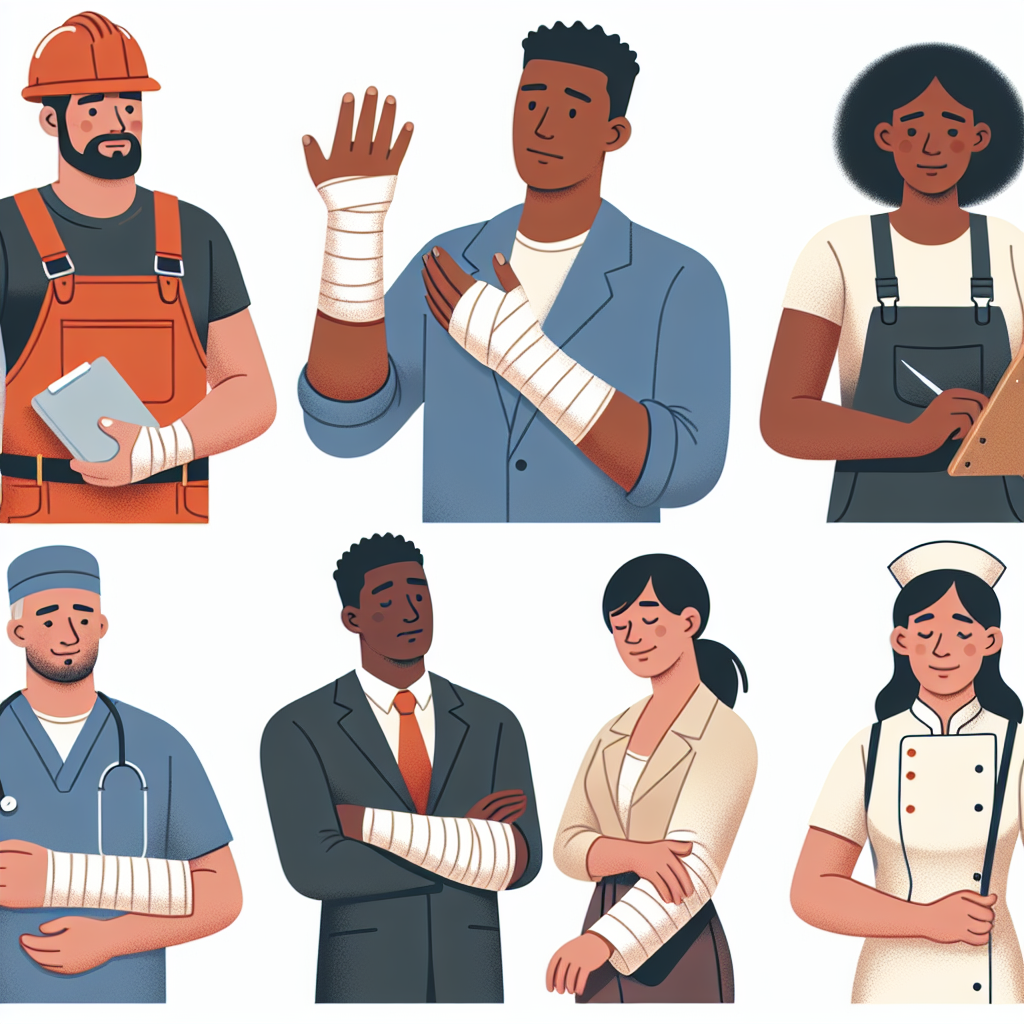Common Occupational Injuries: Understanding the Risks and Prevention
Occupational injuries are a significant concern in various industries, affecting workers’ health, productivity, and overall well-being. Understanding the common types of injuries that occur in the workplace is crucial for both employers and employees to implement effective preventive measures. This article explores some of the most prevalent occupational injuries, their causes, and strategies to prevent them.
1. Slips, Trips, and Falls
Slips, trips, and falls are among the most common workplace injuries, accounting for a significant number of accidents each year. These incidents can occur due to wet or slippery surfaces, uneven flooring, inadequate lighting, or cluttered work areas. Employers can reduce the risk of such injuries by:
- Maintaining clean and dry floors
- Installing proper lighting
- Removing obstacles and clutter
- Using warning signs
2. Musculoskeletal Disorders
Musculoskeletal disorders (MSDs) are prevalent among workers who perform repetitive tasks or engage in heavy lifting. These injuries affect the muscles, tendons, ligaments, and other soft tissues, leading to pain, discomfort, and reduced mobility. Employers can mitigate the risk of MSDs by:
- Providing ergonomic workstations and equipment
- Implementing regular breaks and stretching exercises
- Training employees on proper lifting techniques
- Using mechanical aids for heavy lifting
3. Strains and Sprains
Strains and sprains often occur due to sudden or excessive physical exertion, such as lifting heavy objects, twisting, or bending awkwardly. These injuries can lead to pain, swelling, and limited mobility. To prevent strains and sprains, employers should:
- Provide training on proper lifting techniques
- Encourage the use of mechanical aids
- Ensure employees take regular breaks
- Implement stretching programs
4. Cuts and Lacerations
Cuts and lacerations are common in industries where sharp tools, machinery, or equipment are used. These injuries can range from minor cuts to severe wounds requiring medical attention. Employers can minimize the risk of cuts and lacerations by:
- Providing appropriate personal protective equipment (PPE)
- Ensuring workers receive proper training on equipment usage
- Maintaining tools and equipment in good condition
- Implementing safety protocols and procedures
5. Respiratory Issues
Workers in certain industries, such as construction, manufacturing, or healthcare, may be exposed to harmful substances or airborne particles that can lead to respiratory problems. Employers should take measures to protect their employees’ respiratory health by:
- Providing appropriate respiratory protective equipment
- Implementing proper ventilation systems
- Regularly monitoring air quality
- Training employees on the proper use of respiratory equipment
By addressing these common occupational injuries, employers can create safer work environments and reduce the risk of accidents. It is essential for organizations to prioritize employee safety and well-being, not only to comply with regulations but also to foster a positive work culture.
Conclusion
Occupational injuries can have severe consequences for both workers and employers. By understanding the common types of injuries and implementing preventive measures, organizations can significantly reduce the risk of accidents and create safer work environments. Slips, trips, and falls, musculoskeletal disorders, strains and sprains, cuts and lacerations, and respiratory issues are among the most prevalent occupational injuries. Employers should prioritize employee safety by providing proper training, maintaining equipment, implementing safety protocols, and promoting a culture of safety. By doing so, they can protect their workforce and enhance productivity in the long run.







